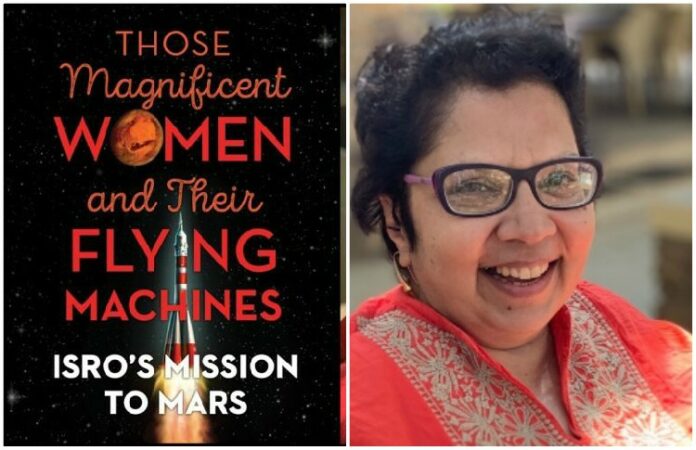Breaking the shackles of gender bias, author Minnie Vaid documented the substantial role played by the women scientists attached with Mangalyaan project, India’s mission to Mars, in her latest book, ‘Those Magnificent Women and Their Flying Machines’. The book narrates the inspiring stories of these extraordinary women at Indian Space Research Organisation (ISRO), how they overcame the naysayers and gender barriers in a field dominated by men to achieve the impossible.
Vaid, who is also a documentary film maker, writer, journalist and has authored three non-fiction books earlier, namely, ‘A Doctor to Defend: The Binayak Sen Story (2011), “Iron Irom: Two Journeys’ (2013) and ‘The ant in the ear of an elephant’ (2016), has taken a plunge to highlight the journey and achievements of these women scientists.
For instance, Nandini Harinath and Ritu Karidhal calculated the spacecraft’s trajectory to Mars, besides overseeing the mission operations; Moumita Dutta and Minal Sampat designed the complex scientific instruments involved in the mission; while numerous other ‘Wonder Women’ have been instrumental in ISRO’s other path-breaking work.
Recalling how she got the idea of writing the book, Vaid says she was invited to a summit, where Mangalyaan scientists were going to share their stories about how they helped launch the mission,“I was fascinated by the brief talks given by scientists Ritu Karidhal, Minal Sampat and Moumita Datta. Their matter-of-fact attitude with unmistakable assumption of competency and confidence attracted my attention. So, the idea to write a book on these women took shape on that day. I do remember the now-iconic photograph of a group of Kanjeevaram silk sari-clad women with traditional jewellery and mogras in their hair, hugging each other in joyous celebration, while some men stood at the fringe of the photograph watching with smiles on their faces.”
The women scientists shared that while they did not face any gender discrimination at ISRO, but balancing home and work was a challenge. “The older scientists did share early reactions where bosses asked if they would be able to stay back late or travel. However, they did not directly allude to gender discrimination in terms of biases and male attitudes beyond what is considered almost the accepted norm by working women across the world: the gaps due to pregnancy, the ‘double work’ needed to be done by the women at work and at home,” Minnie says.
Minnie Vaid profiled 21 women scientists at ISRO, besides above mentioned who worked on operations and design, while Minal Sampath and Moumita Datta who worked on the complex scientific instruments or payloads aboard the Mars Orbiter, other senior women scientists like Seetha Somasundaram, program director Space Science; N Valarmathi, deputy director URSC (U R Rao Satellite Centre) and TK Anuradha, the program director of GEOSAT (Geodetic Satellite) were given prominence.
The book highlights the importance of role of science stream as a subject for the girls. Says Minnie Vaid, “This book profiles women scientists as icons for the next generation. It is meant to encourage girls’ interest in pursuing STEM (Science, Technology, Engineering and Maths) in India. It gives hope to young girls across India to aim for the stars. For most, the challenge began with being ‘allowed’ to pursue science beyond graduation, or to go out of their comfort zone and travel far-off to study and then to working at ISRO.” Continues Vaid, “All these women scientists are role models for future generations, especially for girls –especially those girls who are told science is not for them, which is completely wrong.”


